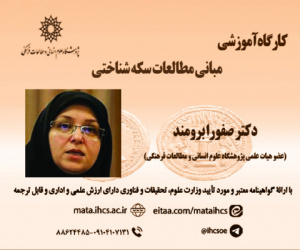طراحی الگوی محرک های بکارگیری راهبرد طراحی زیست محیطی محصولات در صنایع داروسازی در راستای برنامه ریزی منطقه ای (مقاله علمی وزارت علوم)
درجه علمی: نشریه علمی (وزارت علوم)
حوزههای تخصصی:
شماره صفحات:
۶۸۵ - ۷۰۷
دریافت مقاله
آرشیو
چکیده
در حالی که طراحی سنتی، بدون در نظر گرفتن اثرات زیست محیطی، فقط به تولید و استفاده از محصول توجه دارد. یک رویکرد گسترده تر در طراحی زیست محیطی، بررسی و استخراج مواد خام (مرحله قبل از ساخت)، لجستیک معکوس و تأثیر پایان عمر در مرحله طراحی است. بر همین اساس هدف این مقاله طراحی الگوی محرک های بکارگیری راهبرد طراحی زیست محیطی محصولات در صنایع داروسازی بوده است. روش تحقیق آمیخته کیفی و کمی بوده است. در بخش کیفی بر اساس تحلیل تم ، محرک های اصلی بکارگیری راهبرد طراحی زیست محیطی محصولات در صنایع داروسازی مشخص شده است. ابزار گردآوری داده ها در این بخش مصاحبه بوده است. نمونه گیری به صورت اشباع نظری انجام گرفته است. در بخش کمی نیز الگوی روابط بین محرک های اصلی بکارگیری راهبرد طراحی زیست محیطی محصولات تدوین شده است. تحلیل داده ها در بخش کمی بر اساس تحلیل عاملی تأییدی و مدلسازی ساختاری تفسیری انجام گرفته است. گردآوردی داده ها در بخش کمی بر اساس دو پرسشنامه انجام شده است. جامعه آماری در بخش تحلیل عاملی، 252 نفر از کارشناسان و مدیران شرکت های دارویی بوده است. تعداد نمونه بر اساس جدول کرجسی و مورگان 150 کارشناس و مدیر تعیین شده است. یافته های پژوهش در بخش کیفی نشان دهنده هفت تم اصلی و 44 تم فرعی بوده است. در بخش کمی، نتایج تحلیل عاملی تأییدی نشان دهنده مناسب بودن هر یک از الگوهای تأییدی بوده است. همچنین نتایج مدلسازی ساختاری تفسیری نشان می دهد که محرک های اصلی بکارگیری راهبرد طراحی زیست محیطی محصولات در صنایع دارویی در پنج سطح قرار می گیرد که هر سطحDesigning a pattern of drivers for applying the environmental design strategy of products in the pharmaceutical industry in line with regional planning
While the traditional design, without considering the environmental effects, only focuses on the production and use of the product. A broader approach in environmental design is to examine and extract raw materials (pre-construction stage), reverse logistics and end-of-life impact in the design stage. Based on this, the aim of this article was to design a pattern of drivers for applying the strategy of environmental design of products in the pharmaceutical industry. The research method was a combination of qualitative and quantitative. In the qualitative part, based on theme analysis, the main drivers of using the environmental design strategy of products in the pharmaceutical industry have been identified. The tool of data collection in this section was interview. Sampling has been done in the form of theoretical saturation. In the quantitative part, the pattern of relationships between the main drivers of using the environmental design strategy of products has been formulated. Data analysis has been done in the quantitative part based on confirmatory factor analysis and interpretive structural modeling. The data collection in the quantitative section was done based on two questionnaires. The statistical population in the factor analysis section was 252 experts and managers of pharmaceutical companies. The number of samples is determined based on the table of Krejci and Morgan of 150 experts and managers. The research findings in the qualitative part showed seven main themes and 44 sub-themes. In the quantitative part, the results of the confirmatory factor analysis have shown the appropriateness of each of the confirmation







